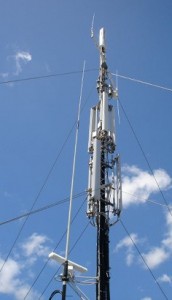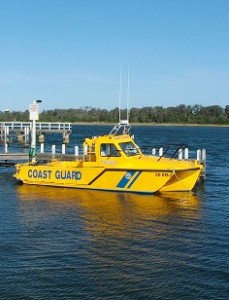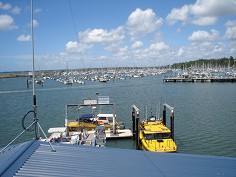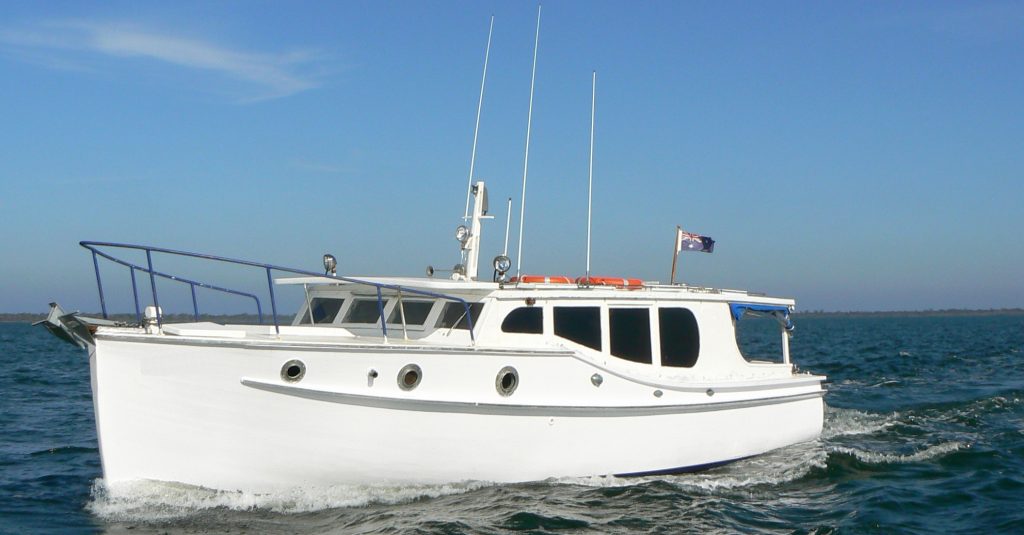5 Tips to keep your Marine Communications System on the Air

Marine Communications Tower
Regular maintenance is vital to keeping your Marine Communication System performing to stated levels. The Autumn and Spring months are a great time to perform maintenance on your Marine Communication Antenna System.
There are 5 simple steps we can recommend to help extend the life of your antenna array and maintain your communications :
- Check earthing: It is not only designed to help in the likely event of lightning strikes, it is also effective at reducing the static build-up often associated with noise or interference in communications equipment. By earthing out the both top and bottom of the feeder run, you can help reduce the overall noise and get clearer communications. For above 60 metre cable runs, ZCG recommend multiple grounding kits be installed along your cable to ensure dissipation of static along your feeder cable run.
- Check the Sealing/Waterproofing of connectors/terminations: Over time amalgamation butyl rubber and PVC tape degrade. UV light slowly breaks down the protective layers and salt air will penetrate into the connection and cause corrosion, leading to performance loss or RF system failure. To minimise this, visual checking and re-sealing connections both internal and external at regular intervals is vital. It is also important to look for damage caused by birds and other wildlife. Cockatoos and other such parrot species are notorious for stripping and heavily damaging coaxial cables. The most effective solution is to feed vulnerable sections of cable through stainless steel bird-proof braid, which will provide the ultimate protection against all such bird damage and reduce expensive replacement costs. The braid ends can be secured with stainless steel hose clamps or stainless steel cable ties. Bird-proof braid is highly flexible and will survive long term in the harshest of marine environments constructed of 316 grade stainless steel and can be fitted during manufacturing.
- VSWR testing: If you have access to a VSWR meter or network analyser, it is a good idea to spend some time once a year checking antenna performance is still as stated by ZCG. Over time, the performance of all antennas will degrade due to environmental degradation. When dealing with communication antennas, this equates to a reduction in range and efficiency. By keeping a log over the space of a few years, you will be able to monitor the performance of your communication antennas and make informed decisions on when to replace. Note: ZCG recommends that Base Station antennas have a VSWR equal to or better than 1.5:1

Communications are mission critical to Marine Rescue organisations and general marine vessels
- Remove old antennas and steel work: Old/non-functioning antennas, excess steel work and non-utilised feeder coaxial cables are the major cause of interference on communications sites. By removing old antennas and the related accessories you can free up space, remove excess weight/reduce wind loading from structures as well as help improve your coverage by reducing the likelihood of interference or coupling being generated.
- Replace/upgrade antennas and feeders: Because communications are mission critical to marine rescue organisations as well as the general user, it is important to ensure your system is the highest quality and performing to stated levels. Having an external antenna designed specifically for Marine applications installed by a qualified installer/technician, can help ensure your communications are always performing to the level you require. In an emergency, time is of the essence and you want to be able to rely on your communications systems to ensure you can get in contact with emergency services or another close by vessel.
ZCG can supply RF solutions for all 5 steps and offer a complete range of base station fixed position and marine vessel mounted antennas specifically designed for marine communications. We also supply coaxial cable, coaxial connectors, grounding/earthing kits, lightning power surge protectors and water-proofing .
Our Victorian-based RF technicians are fully qualified and equipped for tuning assistance, digital site/propagation prediction and RF system consultancy, contact us here for more information
By performing our 5 Tips regularly you can ensure your communication antennas is performing to stated levels.

ZCG can supply Marine RF solutions to ensure your communications systems are always performing to the level you require
The Importance of Coaxial Feeder Cable
Just as important as the quality of the antenna, the quality of your feeder cable or coaxial cable can effect your RF systems efficiency and how far your communications propagate. Most standard marine antennas are shipped with MIL-SPEC RG58 coaxial cable with either and UV stabilised black or white PVC jacket, which in short runs is the market standard and suitable in performance levels to the applications. However, for Base station, fixed position applications, ZCG will always recommend using a high-quality low loss feeder cable like RU400 solid copper conductor coaxial cable (LMR400™ equivalent – Times Microwave Pty Ltd). For cable runs over 30 metres, we would recommend that 1/2″ flexible, foam dielectric coaxial cable P/N ZCG1250 or for super flexible requirements utilising our 1/2″ super flexible helical shielded coaxial cable P/N ZCG1250SF be utilised to reduce signal loss to a minimum over longer distances.
Stainless Steel Cable Ties
316 grade stainless steel cable ties are recommended for securing antenna feeder cable in the harsh salt water marine environment.
- Resistant to corrosion, salt, acids, chemicals, radiation, extreme temperatures and all weather conditions.
- Superior strength vs nylon models.
- Ideal for use indoors, outdoors or underground.
- Install with full confidence that the 316 grade stainless steel will maintain integrity over many decades.
- Tensioner Tool available to fit stainless steel cable ties quickly at the proper tension and neatly cut off the tail.
Marine Antennas for Emergency Services, Commercial and Recreational Vessels

ZCG offer a complete range of Marine antenna solutions suitable for all vessel sizes. The range includes antennas for HF, 27 MHz, VHF, UHF, Mobile Phone, AM/FM Radio and AIS1 & AIS2 (Automatic Identification System).
Every ZCG marine antenna is proudly designed and manufactured in Australia and is:
- Proudly designed and manufactured in our Victorian Head office & manufacturing facility by skill antenna manufacturers.
- Constructed from the highest quality components to ensure longevity – not cable and a piece of wire, like some products on the market.
- Silver soldered internal assemblies, which are robust and won’t deteriorate over time, unlike soft soldered Printed Circuit Boards.
- ISO Quality assurance including, individually inspected and tested of all products through-out the manufacture process, prior to dispatch to ensure optimum tune and performance.
View the ZCG Marine Antenna range here


